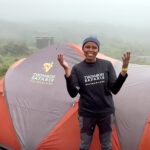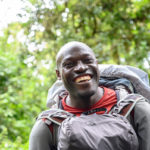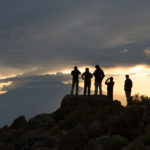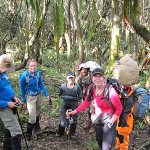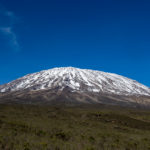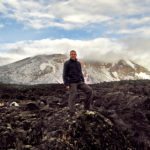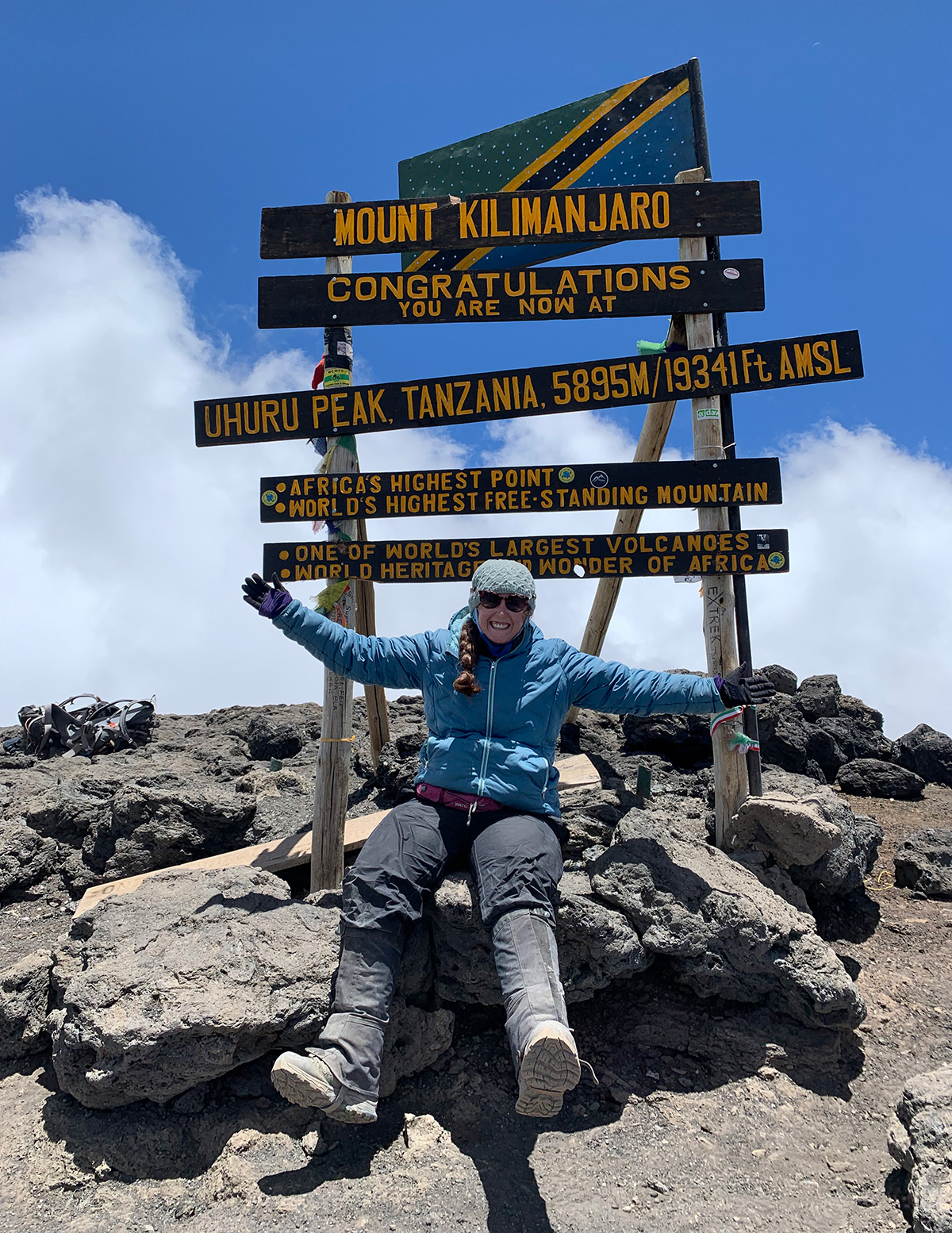
Her muscles ached. The frigid air stung. Huffing and red-faced, Thomson staffer Brittany trekked toward the summit anyway, battling Kilimanjaro’s whistling winds and stirring dust. The oxygen thinned but Brittany remained strong, stronger than she could’ve imagined a few years ago, when she believed she would never be capable of high-altitude climbing.
For so long, that doubt stopped Brittany from even considering Kilimanjaro. But every step she took toward the mountain’s peak was proof she could do things that once seemed impossible.
How did her trek go? We spoke with Brittany to find out.
Q: Why was climbing Kili important to you?
Brittany: I’ve always liked hiking, but I never saw myself as a high-altitude trekker. So when I first started this job, I was pretty positive there was no way I’d ever be able to trek something so high.
But the longer I worked at Thomson, the more I saw how incredible the guides and porters were. I heard inspiring stories of our guests challenging themselves to reach the tallest freestanding mountain in the world. I started to get the idea that maybe I could do it too.
I tried doing more challenging hikes, and somewhere along the trail I realized that it was something I really wanted. It was possible.
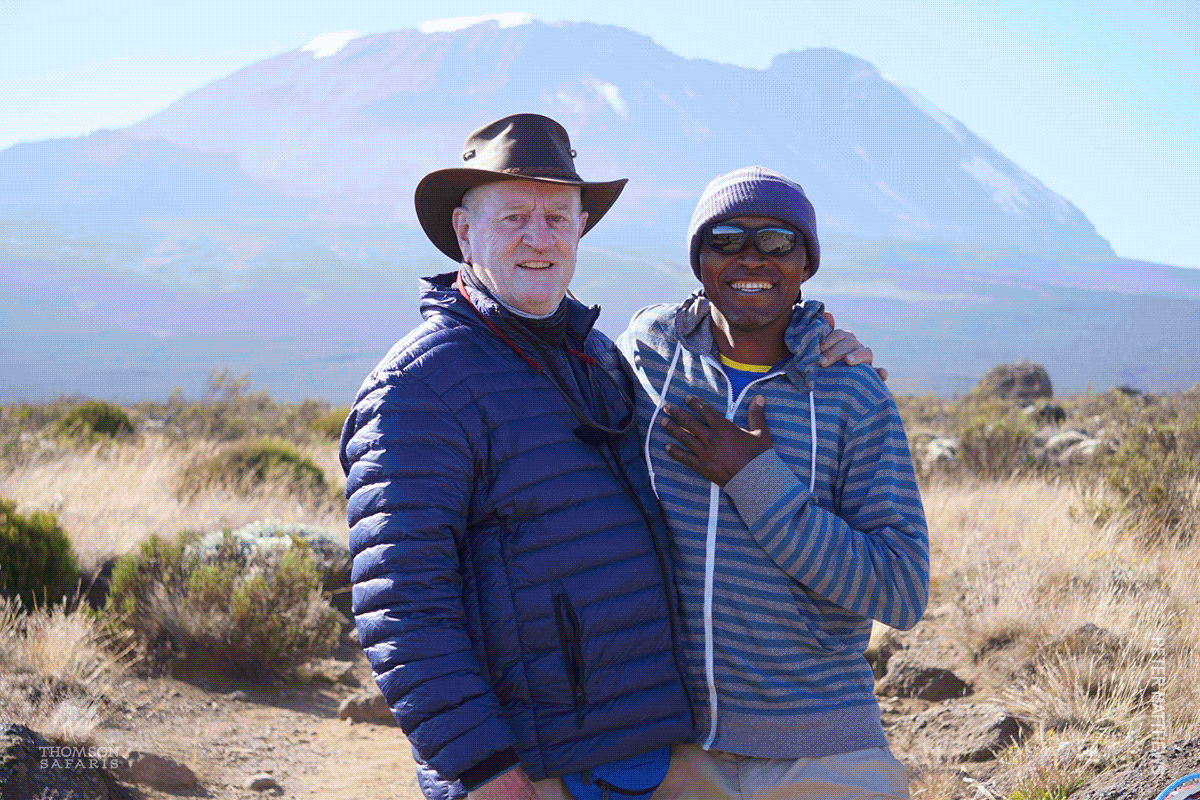 Guides and porters on Peter Matthew’s inspirational trek
Guides and porters on Peter Matthew’s inspirational trek

Why did you choose the Western Approach?
I chose the Western Approach because it gives you a good amount of time to acclimatize. And the way the itinerary is set up is excellent (not to mention, it offers incredible views!). The goal is to hike high so that you get a taste of the altitude, then camp low so you’re not feeling awful the next morning.
How did you feel seeing Kili for the first time in person?
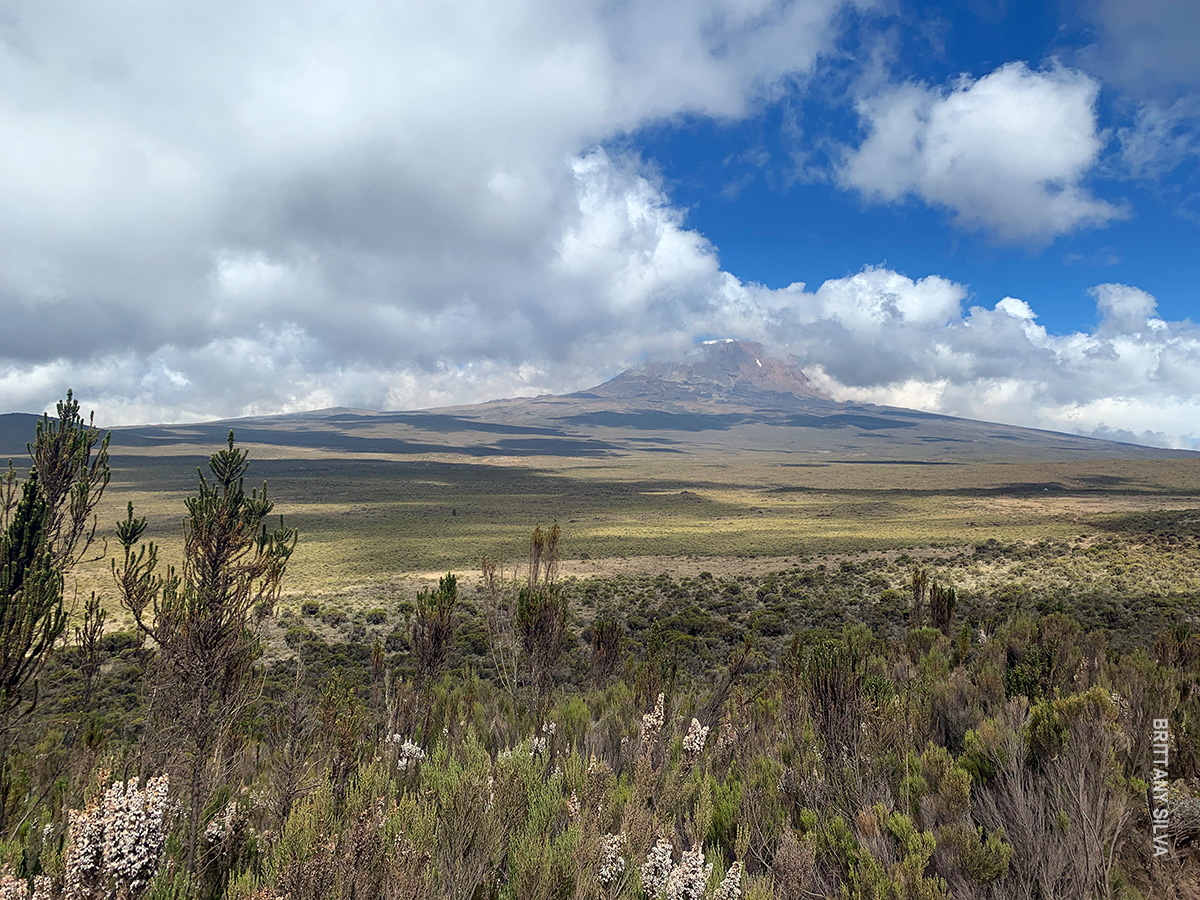
The first time I saw it, I was on the Shira Plateau, looking up. It was surreal. The clouds opened up and I felt like, “This is a scene from a movie.” It was super rewarding to get to the plateau and just hang out for a little while and think, “Oh, wow, I’m climbing that!”
What were the first days of your trek like?
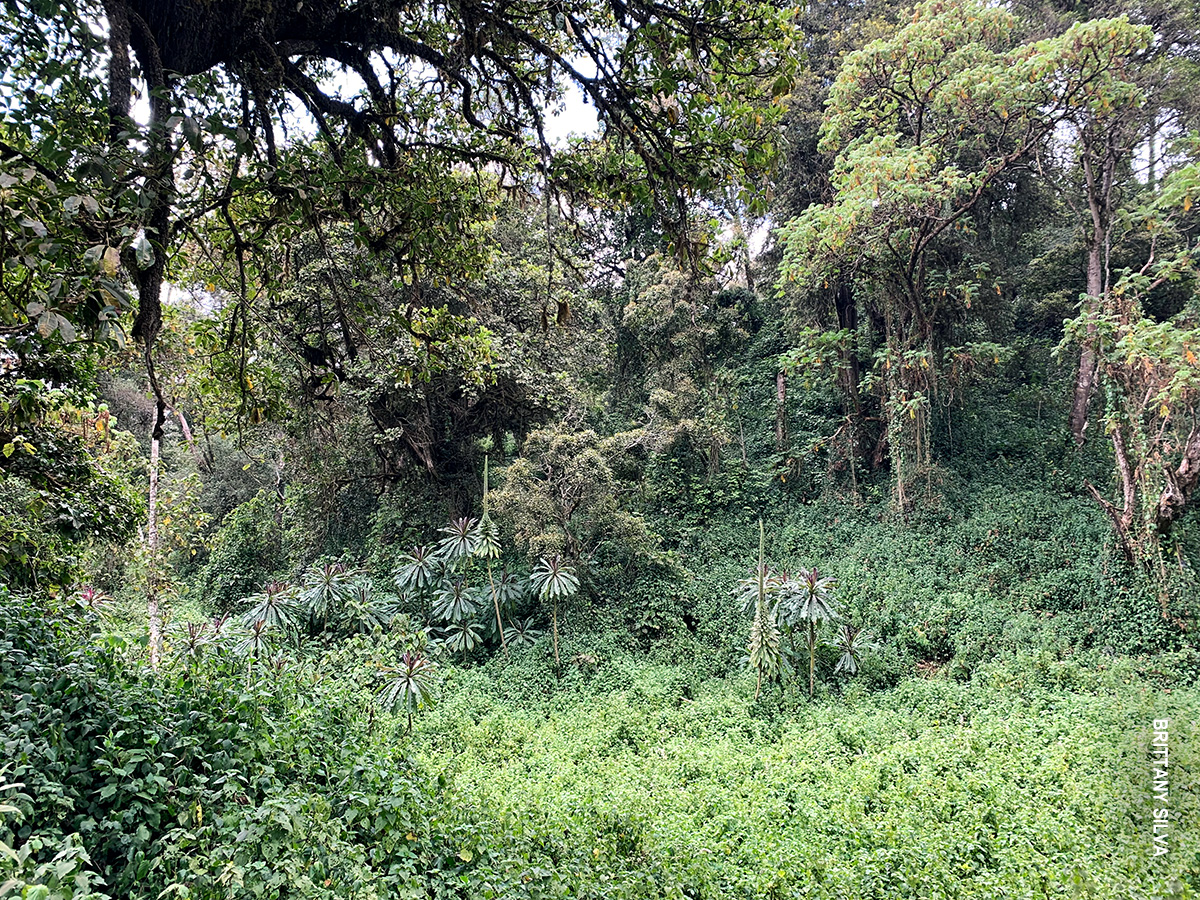
The rainforest, where you start out, is one of my favorite parts of the mountain. It’s so beautiful. It can get a little misty, which makes everything look mystical and mysterious. There are little purple flowers on either side of the trail, and as you trek, you’re surrounded by tunnels of trees, vines and leaves.
During the evening at camp, you can hear Colobus monkeys in the distance!
What was the food like?
So good! It was so good. My favorite meal was the spaghetti and meatballs when we stopped for lunch at Lava Tower. I was tired that day and really starting to feel the altitude. So I got a huge pile of spaghetti and meatballs on my plate, and it gave me the energy I needed that day. Plus, it was excellent—I still think about it.

I couldn’t have done better with an actual kitchen. It’s amazing what the cooks can do. Pineapple Romanoff, fresh fruits, things you would not expect.
Did you hire a personal porter?
Yeah, thank goodness! I’m so happy I did. I was okay the first couple days of my trek, but you know, you just get exhausted. Once I was at the summit, I was experiencing symptoms from the altitude that I never had before. My personal porter was right there with me, telling me to eat snacks for fuel on the trail, helping me anytime I looked like I needed it, reminding me to drink water. It’s easy to forget you need to eat and drink when you’re so focused on getting to the peak.
Your personal porter was a woman, right?
Yes, my personal porter was a woman! Historically, mountain portering has been a male dominated profession. While it’s rare to see female porters on Kilimanjaro, there are a select few who have decided to challenge the status quo—and my personal porter was one of them. She was the only crew member we had on the trip who was female.
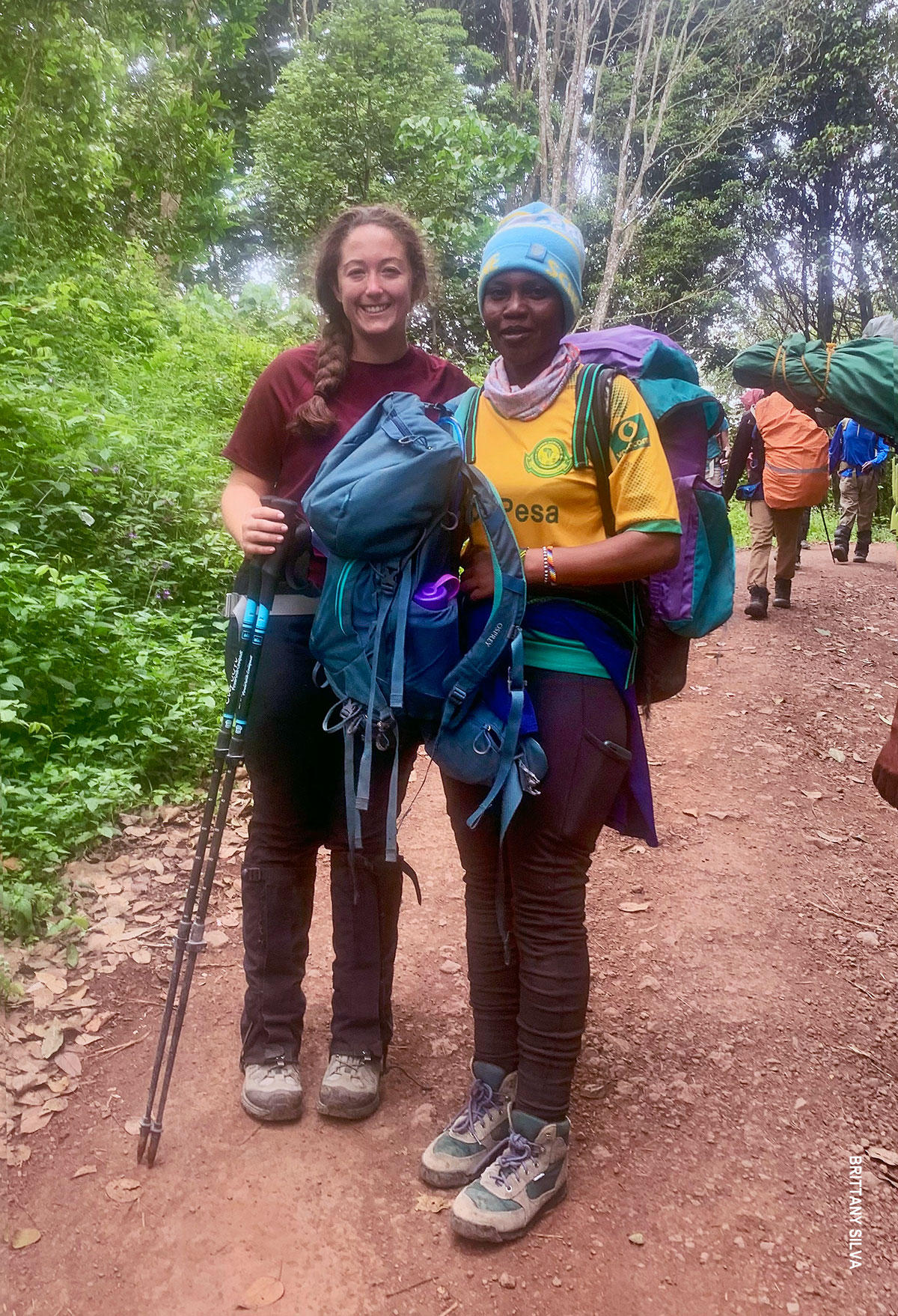 Brittany with personal porter Gertrude
Brittany with personal porter Gertrude
Gertrude was always right there with me, ready to hand me water, snacks, rain gear—anything I needed from my bag. She was encouraging and thoughtful, on top of it all. It’s incredible that despite all the physical and mental challenges of trekking, she was also unafraid to face the challenges of being a woman in a male dominated role. And that she chooses to do it over and over again. Her family and children must be proud of all that she does!
Part of my disbelief that I could ever climb Kili stemmed in part from not seeing much representation of women in the outdoor adventure travel industry. It’s so enlightening to see female porters proving that women do have a place on the summit of Kilimanjaro!
What were the guides like?
So, so great. On every day of the trek, the guide assesses each trekker to see how everyone’s doing, and they may even adjust the schedule if needed. Always listen to them!
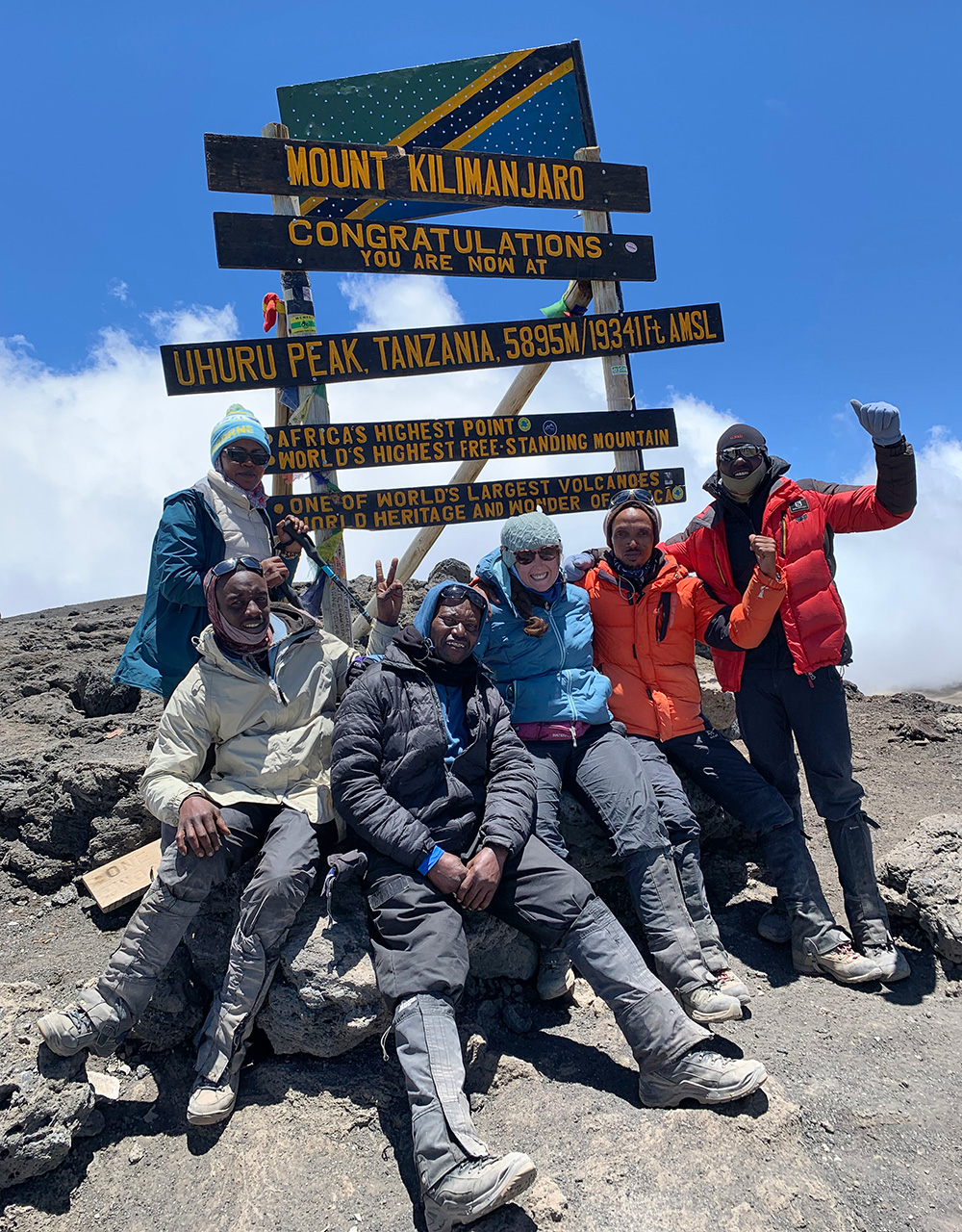 Brittany at the summit with her guides and porter
Brittany at the summit with her guides and porter
My guide decided to change up the itinerary a little bit—we were originally supposed to stay at Lava Tower Camp one evening, but since we made good time on the trail, we kept trekking a few more hours to Barranco Camp. Everyone was looking okay, feeling okay. We were all glad for the change, given our pace and timing. The next morning, we woke up and were right there at the base of the Barranco Wall, ready to go.
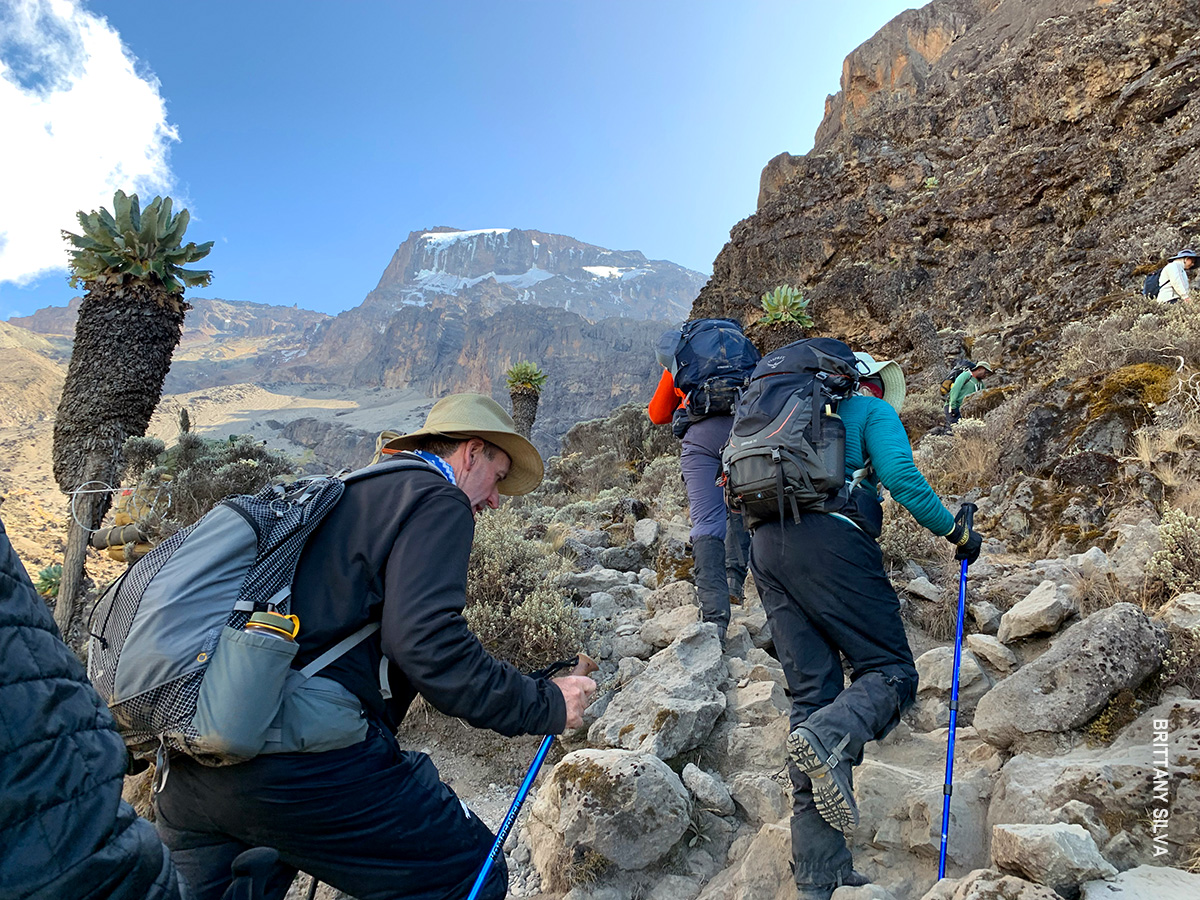 Getting an early start at the Barranco Wall
Getting an early start at the Barranco Wall
The guides were also so great with making sure everyone was comfortable and safe. For example, we had someone on the trek that was afraid of heights. In his words, he was “so, so thankful to have the guides here to help,” and we all agreed! The Barranco Wall is not nearly as scary as the internet makes it sound, but that’s in part due to the guides’ expert advice. They let us know exactly where to put our hands and feet—the guides know the Barranco Wall like the backs of their hands.
Brittany’s guides and porters welcome her and her group to Forest Camp
What challenges did you face on the mountain?
If you stick to your training regimen, each days’ hike may not be the hardest you’ve ever been on. However, the altitude really takes a toll on you, especially on summit day. I felt totally drained, like someone had hit the “off” button on my energy. I was open and honest about all my symptoms with my guides, and they assured me that what I was feeling was temporary, and that I could do it, which really helped. I also had a really encouraging trekking group!
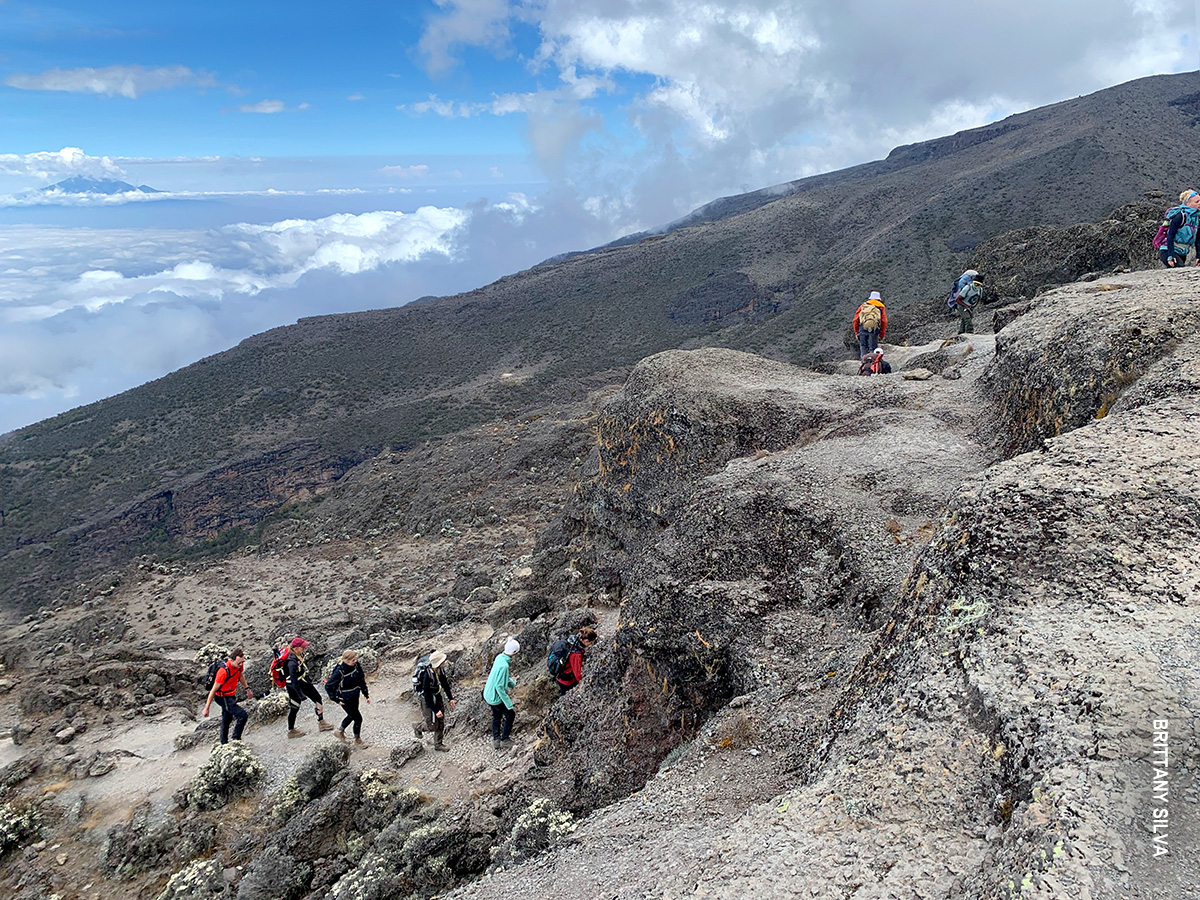
I just kept telling myself to take another step—you’ll be that much closer. It may surprise you how much a positive attitude can help. Focus on the good and keep moving.
I wanted this for so long, and I finally had the opportunity to make it happen, which I was so grateful for—that helped me keep one foot in front of the other all the way to the top.
How was summit day?
Summit day was hard. You wake up at 4:30 a.m., it’s absolutely freezing and the sun hasn’t risen—as they say, it’s darkest before the dawn. You’re wearing pretty much all of your layers, and you feel like a walking, talking marshmallow with trekking poles.
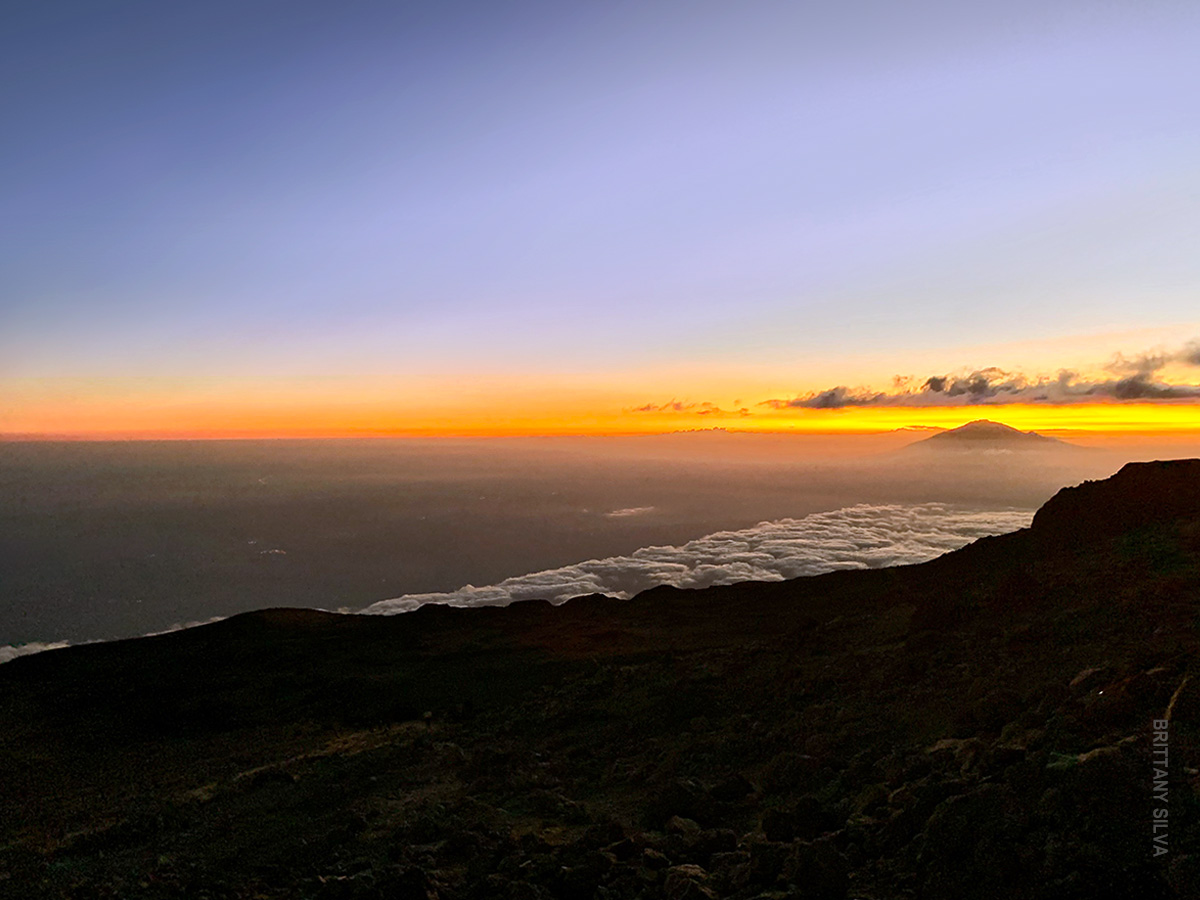
The first part of that trail was rocky and steep. I was lucky to have good weather, but the next part of the trail was like a dusty sand dune, which was tough. It started to feel like one step forward, two steps back. However, once you get to Stella Point, you’re so, so close! That was my turning point, and I started to feel a little bit of adrenaline rushing, which helped me keep going.
I could glimpse the Uhuru Peak sign far in the distance, and I kept saying to myself, “You’ve got this, it’s right there. Don’t worry if the guides are telling you it’s still about an hour away. You can see it, you can make it.”
When I got to the sign, a full-on adrenaline rush kicked in. I cried! I’m not too much of a crier, but I was so incredibly happy. I was wearing sunglasses, so no one knew.
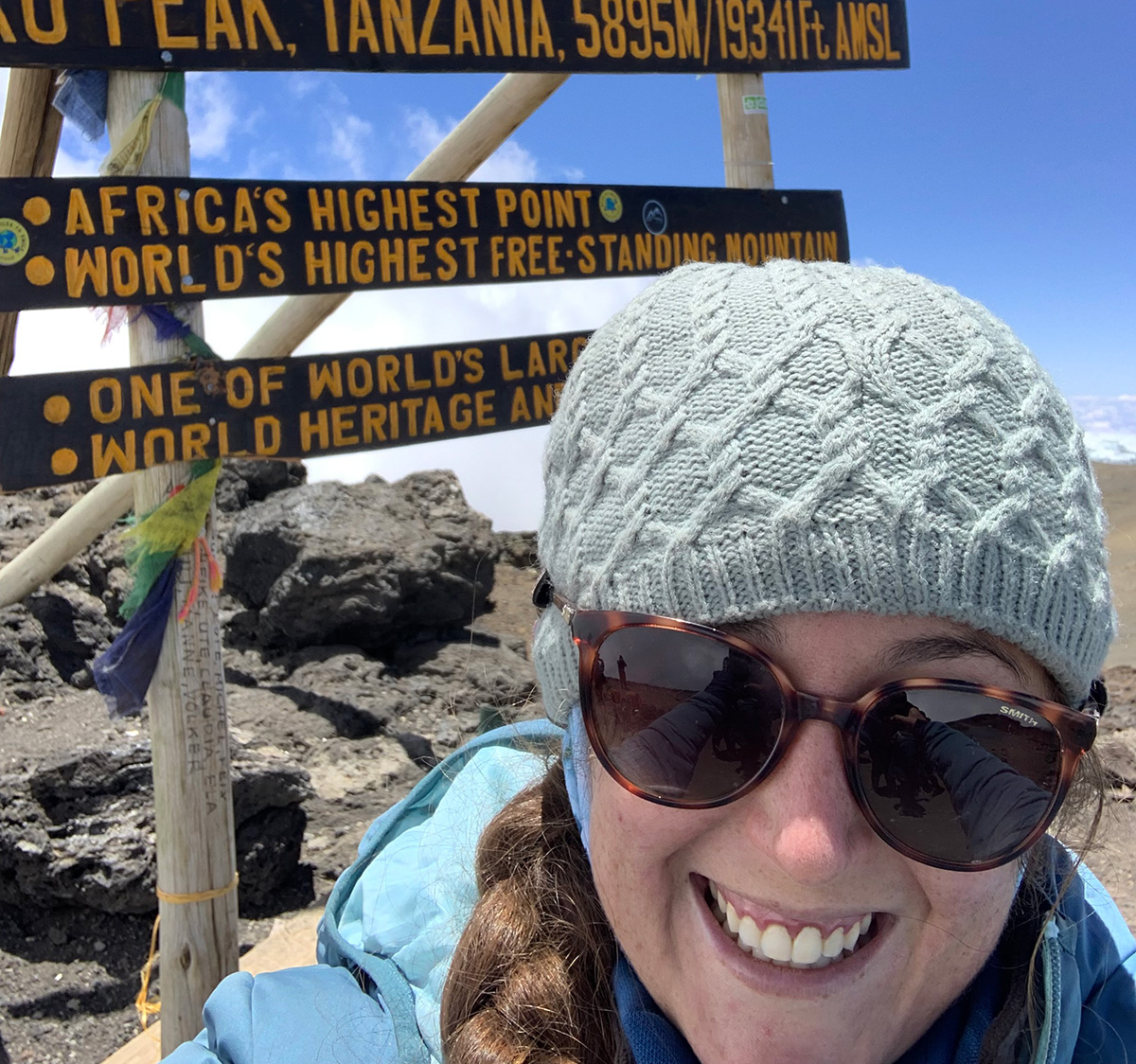 I’m not crying, you’re crying!
I’m not crying, you’re crying!
Any final thoughts?
I went to Zanzibar after my trek, and while I was relaxing on the beach, I had time to think about this adventure. Here’s what I realized: anyone can do it if they’re prepared!
Train. Get comfortable on a trail if you can. A typical day on Kili is three to four hours, but it could be six, seven, eight or more on summit day. You have to get out there and know what your body needs when it’s trekking for that long.
I learned my feet need constant attention to avoid blisters. So, when my trek came around, I wore moleskin and sock liners underneath my wool socks almost every day. If I hadn’t trained and prepared, I wouldn’t have known that, and that could’ve made my trek a totally different experience. Do your research and stay positive. If I did it, anyone can!
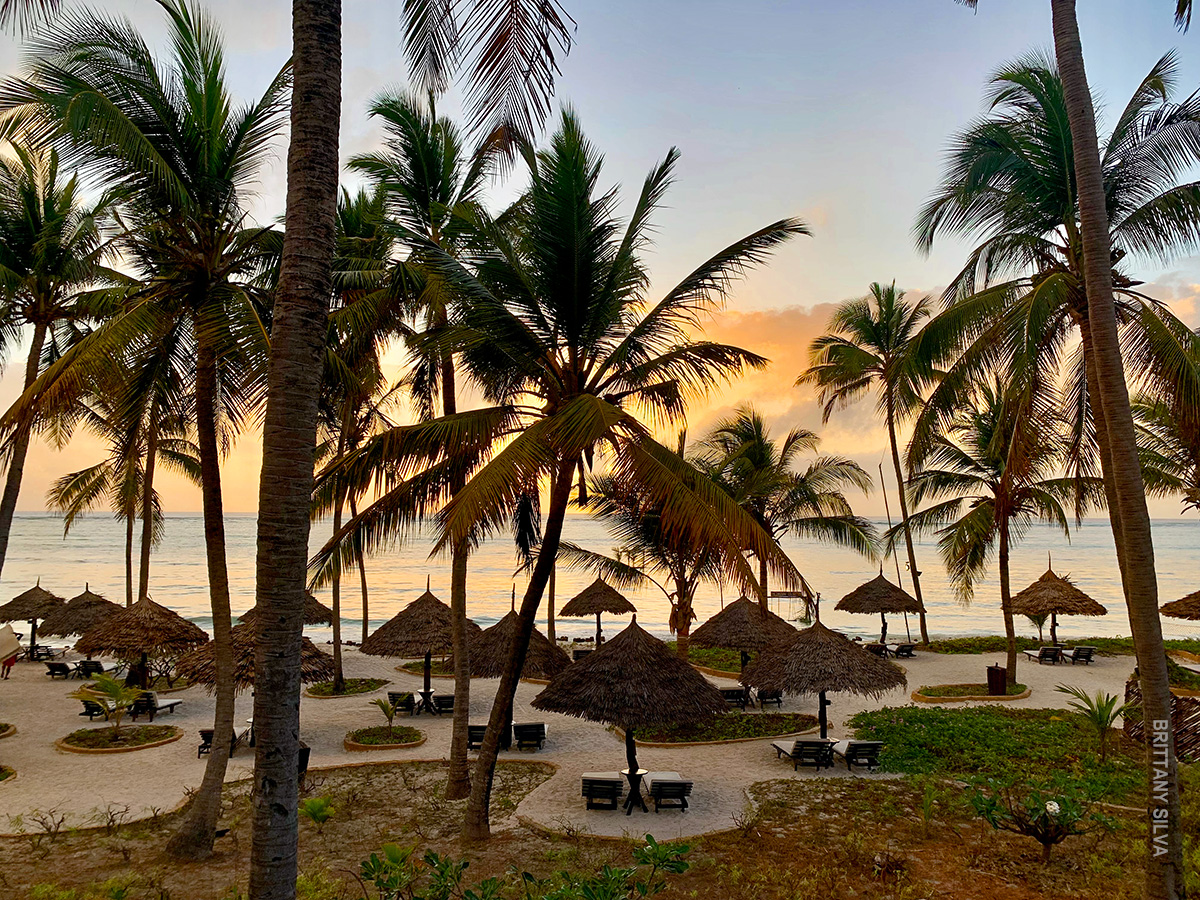
By the way, I definitely recommend going to Zanzibar after Kili. This trek was probably the hardest thing I’ve ever done, which made it all the more rewarding to wade in the warm water by the shore and see the marine wildlife. The brittle starfish were fascinating; they had long swaying arms that would dance in little loops and curves around the sand.
Ultimately, I loved just sitting on the beach, basking in the sun and doing nothing. After trekking hard for days and days, why not treat your body and soul to some well-earned warmth and relaxation?

